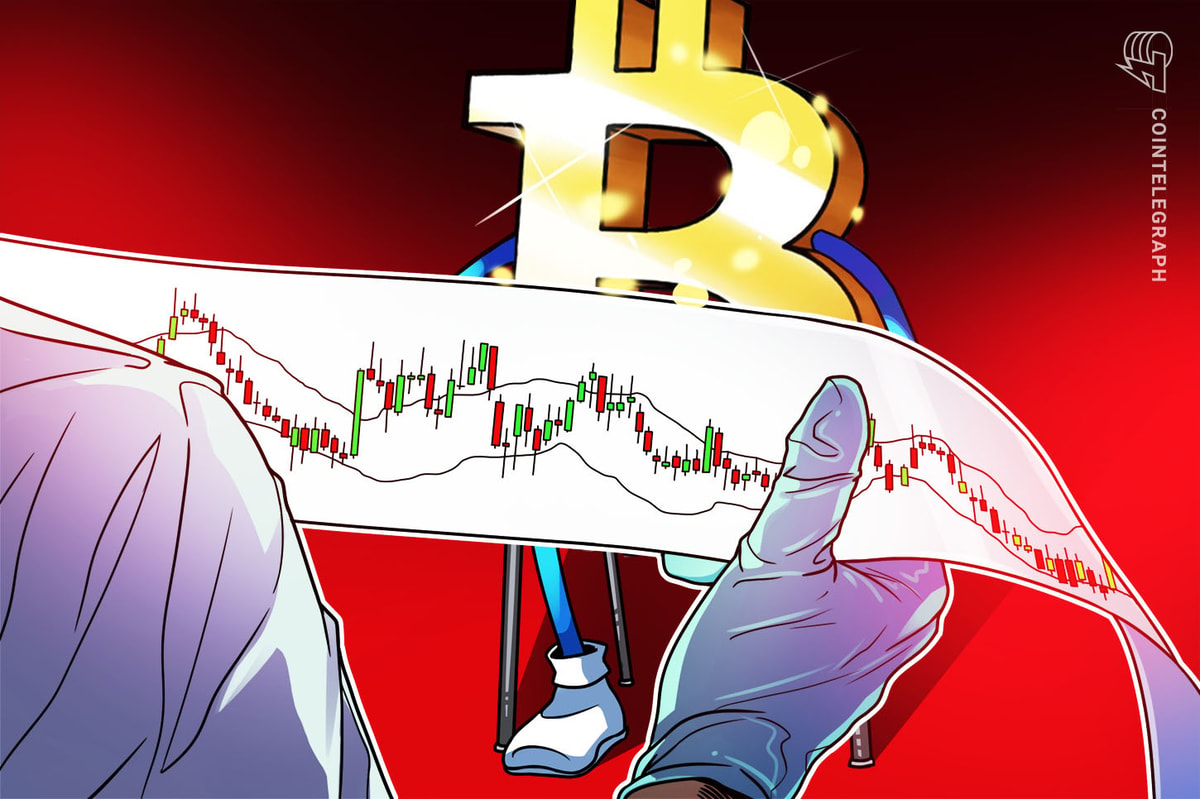A couple of weeks ago Bitcoin legend Charlie Shrem hosted a BlockShow Europe 2017 which was organized by Cointelegraph Events in partnership with Deloitte Germany, nexussquared and BlockPay. The event in Munich became the largest Blockchain-related event organized in Europe so far, attracting over 550 attendees, offering a stage to 32 international speakers and opening an exhibition hall to 25 Blockchain and cryptocurrency businesses.
Shrem himself was impressed by the level of event’s organization. He tells Cointelegraph:
“BlockShow is really great. I’ve been to a bunch of events in the US and this was my first trip outside of the US in the last four years and had to pick a good event. Cointelegraph is not new to the industry, you guys have been around for many years. So it’s not like there are a few events funded by these new entities that do not really understand what the vision was. Of course, you have to know where you came from to know where you are going. So it is a great choice for you guys to organize the BlockShow 2017. It was super awesome and exciting.”

Bitcoin is the printing press of our time, Blockchain is what is powering it
Shrem opened the event with the keynote discussing the current state of the Blockchain, where he compared the technology with the printing press for its potential to move the control out of the hands of the few back to the people.
“It gave people the ability to publish their own information very cheaply across borders around the world and distribute it in a decentralized way,” he says. “Bitcoin is the printing press of our time and the Blockchain is what is powering it.”
Later, in the exclusive interview with Cointelegraph he elaborated on this thought and shared his view on where we are now in maturing of Blockchain technology, as well as what we should expect next.
Let's not rush the Blockchain Revolution
Only the laziest is not talking about Blockchain nowadays. As a rule already, the words ‘Blockchain’ and ‘revolutionize’ go together. But with all the hype around the technology, we need to be realistic. Shrem suggests to keep your feet on the ground while dreaming about all of the good it can do.
“We still don’t even know what this technology actually is, we all thought and we were all pretty confident that Bitcoin was going to disrupt finance and that was it,” he notes. “Over the past few years, we’ve seen all these applications that cover supply chain, logistics, content distribution, all this different stuff that you didn’t even know Blockchain could do. And it pushes us back too a little, we are having all these re-discoveries.”
The use cases suggested by the Blockchain technology seem to be endless, indeed, however, it does not necessarily mean that technology behind Bitcoin is mature enough to be deployed and implemented on a larger scale just yet, or is it?
Shrem shares his perception of technology maturation:
“Bitcoin and Blockchain are still in its experimental phase, we are not even in version 1.0 yet, I think we are super early, I think we are in the mid-90s, it can take us another 20 years to see the mainstream adoption that we all are looking for. I’ve always thought that Blockchain tech is in its college years, it knows what it is, it kinda knows what it wants to do, now thinking of how to actually do it. But maybe it’s more like it’s back in high school because we can’t still figure out what we are doing and what we can do. There’s no reason to rush it.”
Hurdles of Blockchain implementation
The most successful implementation of Blockchain technology to this day is Bitcoin and I guess nobody can deny that this is where the tech is actually mature enough. As for the application of Blockchain technology in other areas, there’s a lot of hurdles, both technical and non-technical.
To start with, how do you convince institutions to replace something that has been operating (even if with relative success) for so many years with something radically new. Besides, there are technical issues that need to be addressed.
“Unfortunately, or rather, fortunately, the tech has grown so much, and now we have all these scaling issues. It’s kind of like champagne problems – when we won the elections what type of champagne do we want to drink? Well, let’s do that later, let’s try to win the elections first! We are kind of at that stage, but now we need to know,” says Shrem and explains: “Because it can break the whole project - how do we scale? Blockchain scaling has taught us that we need to answer these questions now, we need to know how do we scale, how do we grow because we know it’s going to succeed, we know it’s going to do amazing.”
Blockchain technology in other areas is more of a hype perhaps - there is a lot of suggestions (which is great) but we don’t actually see it being implemented, not just yet. Financial services for sure lead the maturity curve nowadays but the adoption rate doesn’t really change. Besides, there are other areas willing to compete in terms of taking a leading role in the implementation of Blockchain.
Shrem says:
“We have already seen a lot of finance, we are gonna see smart contracts, ICOs are going to be huge the next year too. Supply chain and logistics – people are not looking at it yet. I think it comes to the ways corporations and governments talk to each other, they need to trust each other. How do they share debt settlement, financial information, content, intelligence? Governments all share, the only way they do it now is through a signed agreement. They all are looking for a common non-trusted way to be able to move information around.”
Shrem believes that when it will come to the adoption of Blockchain, small corporations are going to drive this process. “Everything is top down, Bitcoin is bottom up,” he notes. “You'll see corporations first, you'll see small banks. We will not even know how big the Blockchain is being used because we will not even know we are using it. What we see and what is already happening is that small banks, corporate institutions that hold reserves, start to hold some percentage of their reserves in Bitcoin. Because they want to hedge, if there’s a potential there’s the future.”
Once in crypto, always in crypto
Some believe that eventually, Bitcoin will turn into a digital gold and that’s what is going to drive the price of Bitcoin up. Shrem feels positive for everyone holding at least 10 BTC in their wallets now, as in 30 years from now it will be enough to buy a nice house.
He recalls the time when the Bitcoin price was going down people would go from crypto back to fiat, however, now when the Bitcoin price is going down, the whole crypto market cap doesn’t move, it is quite the opposite as we see the increase.
Shrem explains:
“People are going to Dash, Ether, Ripple, but you are not seeing money exit the crypto. If you are looking at the market capitalization of all crypto for the last five years, you’ll notice that it is constant up. It is super positive, Bitcoin is a reserve currency, you don’t see much USD to Dash trading pair, you see Dash/BTC, you see Steem/BTC, Bitcoin is like the reserve currency of all of these altcoins.”
Better have Bitcoin regulated - you don’t want a threat of jail
Governments’ attitudes towards cryptocurrencies around the world are still inconsistent when it comes to defining the concept, treatment and legality. But a brilliant thing is that regulations are evolving together with the market.
Some governments seem to be a little bit more advanced when it comes to regulations. China, India, and Japan set off on to finally make up their minds concerning the status of cryptocurrencies. “The Chinese government is taking more like a ‘work with the businesses’ approach, they are visiting exchanges, they are going there, they are speaking to them, they are not just shutting them down not taking away their money,” remarks Shrem. “I’ve always admired the way the Chinese government has been handling innovation comparing to how other governments have been doing this.”
Shrem points out that the Chinese have been a big influence on the Bitcoin price lately. He continues:
“If you go to China everyone is excited about Bitcoin and Blockchain technology, even the government is. The Chinese government is actually funding a bunch of different projects. They just want to protect their national interests. And they want to make sure that people aren’t money laundering and that’s understandable. As long as they are not trying to block innovation and they are taking the right attitude, I do applaud the Chinese government so far.”
The measures taken might feel a little uncomfortable but who would argue that in the long term it is not going to be good for Bitcoin? Chinese, and now Indians are actually begging the government to regulate Bitcoin because that would mean the acceptability, relevance and approval. “A lot of early adopters were like – no regulation,” notes Shrem and continues: “We shouldn’t use regulation. But the issue is that it's not a question of regulation or no regulation, it is a question of illegal or regulation. And you don’t want it to be illegal, you don’t want a threat of jail. Because jail really sucks, but you have to engage governments, they are going to do what they want to do anyway, but we should try to get the best out of it.”
On Bitcoin ETF being declined and other crypto dramas
Does it sometimes feel like we are living in some kind of crypto soap opera, with these never-ending dramas, heartbreaks, and mysteries? We have lived through fake Satoshi story, all kinds of internal misunderstandings, certain consortium’s decisions to abandon Blockchain altogether and so on and so forth. Then there was Bitcoin ETF denial.
Shrem tells Cointelegraph:
“If you asked me about the ETF before it was declined I would say I wish they have never even applied in the first place. Because I felt that a denial would look really bad in the short term. Indeed, an ETF would have been really cool, ‘cause you know my grandfather could buy Bitcoin but Bitcoin is not ready for that yet, we don’t even know what it is, it is so new still. It’s only less than 10 years old, we might need another five to 10 years until we are going to have an ETF traded product. How are you going to regulate something that’s inherently unregulatable?”
Indeed, so what they said No? We just dusted off the fluff and moved on. Now, however, we are in the middle of another drama, the outcome of which is said to significantly alter the future of Bitcoin, and the drama is - SegWit vs. BU.
Shrem says:
“Bitcoin is not free from agenda. Satoshi was very smart and he said – who has the most to gain and the most to lose when it comes to the honesty and integrity of the Blockchain? And that was the miners. The miners spend all the money and they have the financial incentive, which is the best incentive, to keep the Blockchain with its integrity. So governments, institutions, corporations, all these other players, businesses, they are incentivized of course, but they are not directly as incentivized as the miners actually - the miners will always try to make the most of money, but also try to keep the integrity of the Blockchain.”
So, are the miners actually represent the power that controls Bitcoin and its future? Shrem says:
“I think everyone needs to work together, so we see this whole scaling debate which involves the core developers and the miners but there’s not really a lot of miners, there’s a small group of them, so let’s see what happens. Satoshi built the whole system kind of like with balances of power and we are seeing the balance being pushed to limits. Now we have all these different entities involved and everyone has a say, and maybe they are taking a little bit longer but we are going to have the best possible outcome, the best possible solution, which is tested and production ready.”









